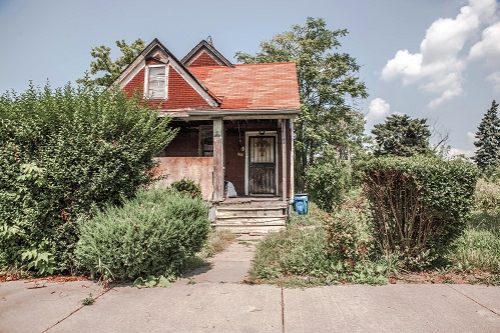How does the home insurance claims process work?
The homeowners insurance claims process is generally the same for all claims, although some may have more steps than others. A hail damage claim involving your roof, siding and windows for example, will involve some different steps than if tools have been stolen from your garage.
It’s vital to stay on top of each step as the claim proceeds.
After the damage or loss
- Let the authorities do their job. Your first step as a homeowner is to stay safe and follow the instructions of any authority involved, be it the fire department or police. If there has been a crime, you must file a report to the police; you will need it for your claim. Don’t re-enter the property until any authorities on the scene clear you to do so.
- Document the damage. Take photos and videos from as many angles as possible to document everything.
- Mitigate further damage. Do whatever you can to prevent further damage to your home. Cover broken windows with plastic film, cover holes in the roof or siding with tarps, but only do what’s safe. Don’t climb on a damaged roof or step inside an unstable structure.
Filing your homeowners insurance claim
- Contact your home insurance company as soon as possible. You can file online, with a mobile app, over the phone with a claims hotline or with your agent. If the claim is for serious damage that needs immediate attention, it’s best to call and speak to someone directly.
- Provide all documentation quickly. The claims representative will let you know what you need to provide. Initially, that will likely include photos of the damage and any police reports you have.
After filing: next steps
- Talk to your adjuster. Your insurance adjuster will likely call you to discuss the claim or may email you. They will make plans to inspect the damage and explain to you what your policy covers and the limits of coverage.
- Get quotes for items that must be replaced. Gather quotes for the replacement cost of any items destroyed or stolen. This is where documentation and a home inventory becomes important. “In the unfortunate event that your home is destroyed, most homeowners only remember a fraction of the possessions they have acquired over a lifetime. Remember the insurance company will only pay you on items you can identify and document,” says Dorf.
- Get repair estimates for damaged items. For damage to your home, have a licensed contractor examine the damage and provide an estimate for repairs. It’s a good idea to get more than one estimate if possible. Your insurer may have a list of recommended contractors.
- Submit all estimates and quotes to your adjuster. If you’re working with a contractor for repairs, they will likely ask you to sign a contract that allows them to interact with your insurance company on your behalf. They will send estimates directly to the adjuster and negotiate on your behalf as needed if there’s any disagreement on what work needs to be done.
- Keep all receipts and documentation. If you have paid to have initial repairs done, keep those receipts and those for anything you need to buy to secure the home after the damage.
“Your insurance policy requires you to present and prove your claim. You must justify and detail every dollar you expect the insurance company to pay both on the building/home that was damaged as well as the personal contents,” Dorf says.
How claims are paid
- The initial claim check. Once estimates are complete, your insurance company will send an initial check. This check will be for the depreciated value of the repairs or replacements. Here’s what you need to know about this check:
- If the policy provides replacement cost coverage on the damage, this is just the first check. This is the case with dwelling coverage on a standard HO-3 home insurance policy, but for personal property you may not have replacement cost coverage; it’s usually an endorsement you add for an extra cost. “Don’t be scared of additional coverages, which are called endorsements, though they may have an additional cost, these additional coverages can make a big difference in your settlement amount,” Dorf says.
- This check can be used to pay the contractors a deposit and get work underway.
- If the damage is not covered at replacement cost, but at actual cash value, this may be the only check you receive.
- If this check is for repairs to your property, and you have a mortgage, it will be made out to you and to the mortgage company, which is listed as a loss payee on your policy. You will need to send the endorsed check to the mortgage company, which will endorse it, cash it, and send the money back to you. In some cases, especially large claims, the mortgage company may hold funds until you provide proof that the work is being done.
- The deductible. The insurance company will deduct the amount of your deductible from your initial claim check. You will need to pay this amount directly to the contractor. If the check is provided to replace personal property, you don’t have to pay the deductible to anyone, it will simply be an amount you cover yourself when you buy new items.
- Further claim checks. As your claim proceeds, you may receive further checks. This can occur as:
- Further repairs are approved by the insurance company based on updated estimates or negotiations with the contractor. For example, the insurance company approved the repair of a section of siding, but the contractor demonstrates that a match for that siding is not available. If approved, this will change the amount of the settlement, and the insurance company will issue another check.
- Repairs are completed and the contractor submits the final bill to the insurance company to request payment for the remaining balance of the replacement cost.
If you can’t live at home during repairs
- Ask about your coverage. If your home is damaged enough that you can’t live there while it’s being repaired, your home insurance provides coverage, But before you check into a hotel, talk to your adjuster about what is covered and the limits of coverage. Insurance will pay only for what is necessary and exceeds your normal living expenses.
- Keep your receipts. Keep receipts for everything from hotels to laundromats, anything that is outside your normal expenses when living at home.
- Submit everything to your insurance company. Your loss of use, or additional living expenses coverage, works on a reimbursement basis. You will need to pay upfront, and then submit to your insurance company for reimbursement, which will be sent to you after the adjuster reviews and approves the expenses.
If you’re not happy with the settlement
- Negotiate with your adjuster. You can discuss the settlement amount with your adjuster and present additional evidence to support a request for additional payments.
- Use the appeals process. If your home insurance claim is denied or the settlement is too low, and you can’t work it out with the adjuster, follow the claims appeal process with your insurance company.
- Get outside help. Hire a public adjuster to help you with your claim; this is something to consider from the outset if you have a large claim for a lot of damage. A public adjuster will work on your behalf to ensure you get the correct settlement.
“The fact the insurance company offers you a sum of money does not mean you are receiving everything you are entitled to. Most people do not have the knowledge of insurance policies to know if all coverages have been identified appropriately. You could easily walk away from a large amount of money you didn’t know was yours,” Dorf says.
Is there a time limit to file a home insurance claim?
You should file your claim as soon as possible; however, sometimes you don’t notice the damage until some time has passed. This may be the case after a winter storm, for example, when snow hides damage.
Most states have a statute of limitations on filing a claim; commonly, it’s two years. To avoid missing this window, have an expert inspect your home immediately after a storm if you suspect there might be damage.
Your insurance company may also have a clause in the policy stating how long you have to file; be sure to read it carefully.
How long does a home insurance claim take?
How long a homeowners insurance claim takes to settle completely depends on the type and severity of the damage. The process of repairing everything may take some time, especially if you live in a place where it’s difficult to complete construction during the winter.
State laws govern how long an insurance company has to accept or deny and send a payment for a claim; they range from 15 days to a less clear-cut law that simply states the time frame must be “reasonable”.
Remember that this payment will only be the initial check; as discussed above, additional checks may follow. Stay in touch with your adjuster as repairs are completed so that you can settle the claim as quickly as possible.
FAQ: Home insurance claims
Can I file a home insurance claim after repair?
Yes, as long as it’s within the time frame allowed for filing claims. Keep all of your receipts and make sure you have documented the damage and the repairs.
Does filing a home insurance claim hurt you?
In many cases, filing a claim will increase home insurance rates. If you have filed multiple claims in the past few years, the insurance company could decide to non-renew your policy, as you have become too high a risk. Avoid filing small claims; the increase in rates may not be worthwhile.





